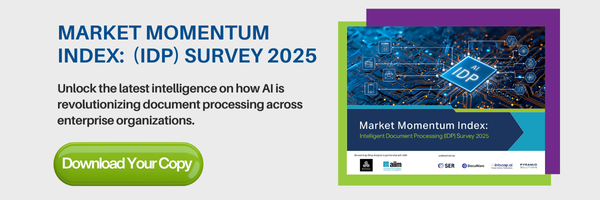Intelligent Information Management Glossary
Not sure what something means? We have you covered! We've defined many of the key terms in Intelligent Information Management for you.
What is Enterprise Content Management (ECM)?
It’s not enough to “manage” content. The ability to access the correct version of a document or record is important. Content must be managed so that it is used to achieve business goals.
Enterprise Content Management is the systematic collection and organization of information that is to be used by a designated audience – business executives, customers, etc. Neither a single technology nor a methodology nor a process, it is a dynamic combination of strategies, methods, and tools used to capture, manage, store, preserve, and deliver information supporting key organizational processes through its entire lifecycle.
- Capture boils down to entering content into the system.
- Manage is what you do next to it, so it can be found and used by whomever it is intended for.
- Storing it means finding it an appropriate home in your infrastructure, be it a formal content management system or other information solution.
- Preserve refers to long-term care – archiving, if you will – the practice of protecting it so it can be utilized however far into the future the organization needs it to be available.
- And deliver is all about putting the information in the right people’s hands right when they need it to be there.
Document management eventually was subsumed into content management in no small measure because there is more information available to us today than ever before, and most of it is not being created by us. Thanks to the mainstreaming of a whole range of sources like the Web, thumb drives, smartphones, cloud, etc., the need has accelerated to deal with information of all kinds: not just in terms of more media types like text vs. images vs. voice files, but also in terms of how structured – and thus how readily managed – it all is.
Structured information is information that is highly defined and not only is intended to be processed by a computer program but readily can be – like most of the information held in relational databases and acted upon by line-of-business solutions.
Unstructured information is, well, information that does not have a fully defined structure and most likely will be read and used by humans. As examples, think of most of the information produced by common office applications (word processors, presentation programs).
Semi-structured information is information that lies somewhere in between, like invoices, purchase orders, and receipts, which contain data to be computer-processed but which come in formats and layouts that first need to be identified and classified – a task that often is handled by humans but increasingly is being automated as the tools improve.
Intelligent Document Processing (IDP) has revolutionized this space. IDP utilizes artificial intelligence to automatically process and manage documents, incorporating machine learning and computer vision to extract, classify, and validate data from these varied document formats with significantly improved accuracy and speed.
This all becomes important when you consider the effect on your business that not managing these elements can have! Diminished utility, loss of time, loss of productivity, possible non-compliance with regulations or corporate policies, the risk of serious business interruption if key repositories die or natural disasters strike – none of them happy outcomes!
Modern ECM strategies increasingly integrate IDP solutions to mitigate these risks by automating the extraction of information from various document types, significantly improving operational efficiency while reducing manual errors. These AI-powered automation capabilities enable organizations to navigate and manage large volumes of documents effectively.
Effectiveness, efficiency, compliance, and continuity all combine, in different proportions, to drive the business case for content management in most organizations.
Transactional content management targets processes that focus on enacting business or bringing about a decision or end-result. These processes are not focused on creating content but using content to help drive actions and decisions.
Examples include invoice processing, application processing, employee onboarding, accounts payable, insurance claims, patient charts, and the processing of permits and loans.
We talk about transactional content management here rather than under content management because it usually requires a lot of workflow configuration and integration with other systems. Being content-oriented, though, it just as easily could have been listed under content management, as the name suggests. For charting purposes, think of it as occupying a space right along the border between the process and content disciplines – which are fairly tightly tied together anyway.
ECM is an ongoing and evolving strategy for maximizing how your content is to be used.
